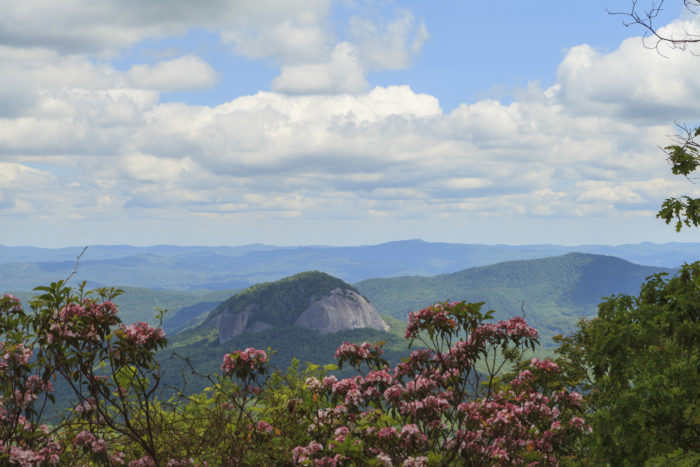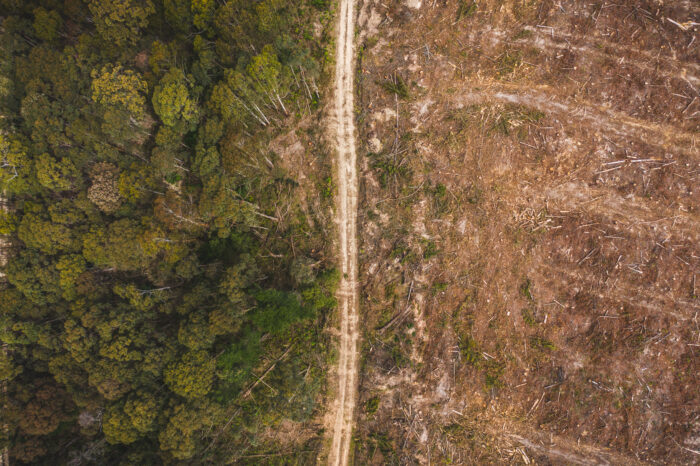USFS misses major opportunities in Nantahala and Pisgah Forest Plan
After eight years of planning, the US Forest Service released the latest version of its long-awaited Nantahala and Pisgah Forest Plan, which maps out the next two decades for two of the country’s most visited – and most beloved – national forests. When combined, the Pisgah and Nantahala National Forests total more than a million acres, contain more than 1,500 miles of trails, and boast some of Western North Carolina’s most iconic outdoor destinations.

The Forest Plan sets a vision for the future of these important forests. At the most basic level, the document outlines where things like hiking, logging, mountain biking, and roadbuilding are allowed, and where they aren’t. SELC has been involved every step of the way throughout the years-long process to develop this plan including by urging thousands of advocates to make their voices heard.
Since this plan will guide the Forest Service’s actions for decades, it is crucial that the agency get it right. While the newly released Forest Plan has much more up-to-date science and public input to rely on than the original plan, it nevertheless fails to protect old growth, rare and unique habitats, and backcountry areas.
The Forest Plan covers a variety of issues, but logging has been front and center. Logging has a long history on our national forests, and it is important to some of our local economies, but the Forest Plan must ensure that timber harvest happens in the right places and for the right reasons. The revised Forest Plan falls short on both counts.
Logging in the wrong places…
The Plan takes areas with extraordinary natural values, including areas with wilderness characteristics, known old growth forests, and areas with exceptional biodiversity – over 100,000 acres of them – and schedules them for heavy logging and roadbuilding. While not all of these acres would be cut in the next 20 years, any of them could be.
That leaves places like Chunky Gal Mountain, a backcountry destination connected to the Southern Nantahala Wilderness, and Daniel Ridge, another backcountry area in the Pisgah National Forest that is popular with mountain bikers, at risk. These places should have been protected and managed for their remote, natural values, not developed for timber production.
…And for the wrong reasons

Projects under the old plan have often included irresponsible timber practices, such as harvesting old growth. The new Plan, however, was pitched as an opportunity to use timber harvest to improve ecological health and restore forests that had been degraded in the past. Unfortunately, the Forest Service has slid back into its old ruts: the revised Plan just gives us more business-as-usual logging.
Rather than restoring the diverse species composition and ecological processes that ought to be found in our forests, the Plan emphasizes heavy-handed logging methods that produce unnatural results. The Forest Service now explains that it will stick with those outdated methods because they make more commercial sense, and while that may be okay in areas of the forest that have already been developed for timbering in the past, but it isn’t a good fit for a place like Cedar Rock Knob – an area with rare habitats, high recreational use, and superb scenery.
Missed opportunity to store more carbon
The wrong kind of logging on our forests won’t just have negative effects locally; it will also worsen climate change. The Southern Appalachian forests are globally significant carbon sinks, meaning they pull dangerous, heat-trapping carbon from the atmosphere and store it in trees. They also skew younger than other large forests because of historical logging. Protecting and restoring our older forests is the cheapest and most straightforward way to fight climate change.
However, the Forest Plan does not take advantage of our forests’ potential. It targets older, productive forests, which are our best carbon batteries, for the heaviest harvests. This will release large sums of carbon into the atmosphere at a time when we urgently need to be doing the opposite. Timber harvest at the expense of protecting and restoring old growth forests is simply unacceptable.
SELC is leading the way in protecting our Southern Appalachian forests.
Ignoring common-sense solutions
During the eight-year planning process, a broad group of stakeholders, including SELC, worked to make recommendations for the forest plan. The Nantahala-Pisgah Forest Partnership, which includes conservation groups, timber interests, hunting groups, and many others, worked to develop consensus recommendations for the two National Forests. These recommendations actually promoted increases in timber harvest for the purpose of restoring degraded forests, and it paired those increases with strong protections for our healthiest forests.
These common-sense, balanced solutions would have protected old growth and rare habitats, improved forest diversity for the benefit of our native wildlife, stored more carbon, maintained the integrity of backcountry recreation areas, and supported local economies. Unfortunately, the Forest Service rejected safeguards for natural values, tipping the plan out of balance and setting the stage for 20 years of unnecessary conflict and ecological damage.
The good news is that the “final” Nantahala and Pisgah Forest Plan isn’t quite final yet. Groups that previously provided input on the draft plan have 60 days to seek additional changes. SELC is continuing to work to make sure our forests’ magnificent places are conserved for the next two decades and beyond.
